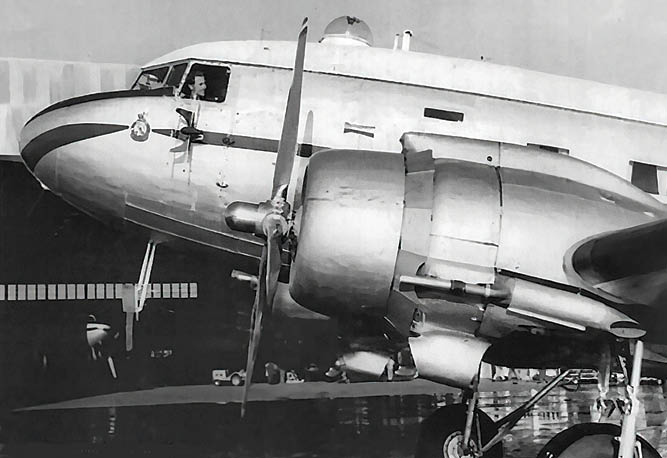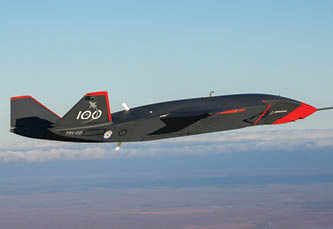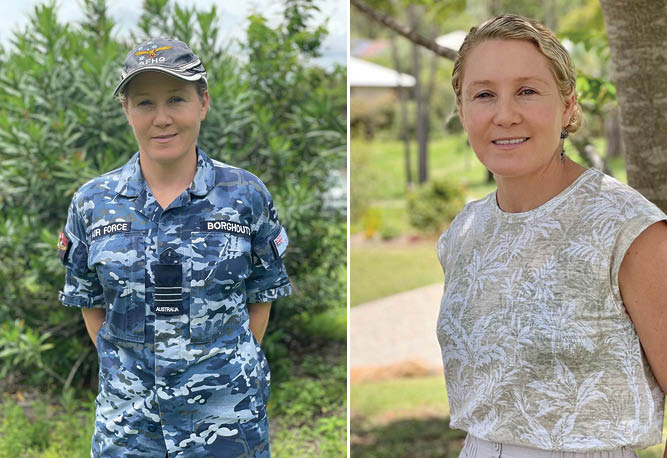By Charles Page
On the evening of Monday 31 July 1961, four Australian airmen were killed in the tragic crash of RAAF Dakota A65-106, some 35km north-east of Perth. Leading Aircraftman William Miles survived the crash and vividly recalls that eventful evening. He had been seated towards the back of the aircraft reading the Rigby cartoon in the Daily News. Shortly after takeoff, he became aware of dripping water, and wondered why his newspaper was in tatters. He was somewhat bewildered to find himself sitting in his seat in the bush, in pouring rain, surrounded by burning aircraft wreckage. To his surprise, he could see passenger Neil McBain and Leading Aircraftman Tony Leiper, ahead of him, also still in their seats. When the Dakota crashed, all three had been catapulted 100 yards forward, while still in their seats, but were relatively uninjured.
Dakota A65-106 was delivered to the RAAF in May 1945 and spent time with 37 Squadron, Aircraft Research and Development Unit, and No 2 Air Trials Unit. The C47B Dakota had been fitted out with Mercury capsule equipment supplied by NASA. The purpose was to simulate a Mercury spacecraft crossing the sky, so that tracking station equipment and procedures could be tested prior to an actual space mission. George Harris, from the Goddard Space Flight Center, oversaw the installation as well as the training of the aircraft crew and station personnel.
The aircraft and crew had been travelling to a number of locations around Australia on the NASA task, and were in WA calibrating the Muchea Tracking Station. They had spent the day flying their C47 Dakota in a pattern around the Muchea station. Weather had delayed the program for three days, and on 31 July the crew flew two final calibration sorties. They had intended to leave earlier in the day for RAAF Edinburgh, South Australia, with a refuelling stop at Forrest. However, the calibration had been delayed due to technical difficulties at Muchea.
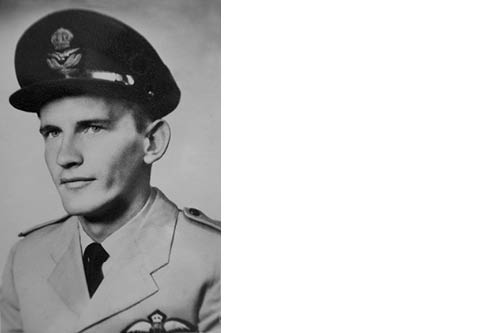
A65-106 finally departed Pearce at 7pm, taking off from runway 18 (to the South) at dusk and in passing rain showers. The pilot in command was Flying Officer William John Bowden, 23, single, from Tuart Hill, WA. His 26 year old co-pilot, Flight-Sergeant Peter Frederick Davis, came from Elizabeth, SA, while the navigator, Flying Officer Robert George White, was from Petersham, NSW. Signaller Flight Lieutenant Alexander John Cook, 37, married, came from North Glenelg, SA.
Leading Aircraftman William Miles, an Engine fitter from Nedlands WA, was seated in the rear of the aircraft, along with fitter Aircraftman Robert Leiper, also from Nedlands. Mr. Neil McBain, of the Department of Supply, was also seated in the rear. He was looking forward to returning to his home in Somerton Park, Adelaide.
Darkening skies, low cloud, and rain squalls reduced the visibility, as the Dakota lifted off, turned left and climbed towards the hills. But the Dakota could not out-climb the nearby Darling Range and within three minutes it was clipping tree tops, cutting a swathe through the gum trees, shedding wings, engines, debris and finally smashing into a large gum tree, and bursting into flames. It had come so close to clearing the hillside, but its flight had ended just four miles south-east of Pearce.
Miles and Leiper fought their way into the wreckage of the rear cockpit, rescued the badly injured Flying Officer Bob White and Flight Lieutenant John Cook, and used an inflated emergency dinghy to shelter them from the rain. They then tried several times to rescue the two pilots from the fiery remains of the front cockpit, but Flying Officer Bowden and Flight Sergeant Davis had been killed on impact. Tragically Bob White and John Cook died during the night.
Meanwhile, Pearce Air Traffic Control raised the alarm, and diverted an arriving Ansett-ANA DC-6B to search the crash area. The crew reported seeing the Dakota still burning.
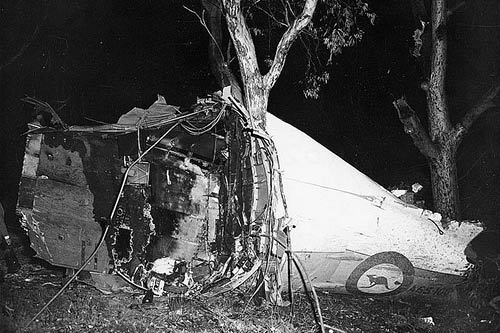
As reported in The Age: ‘Although the crash was known at 7.25 pm it was not until five hours later that the first survivor was removed from the wreckage and brought to Pearce … A farmer who guided the first party to the wreck said the aircraft went up in a ball of flame when it hit the hillside, lighting up the valley below.’ The search began soon after the crash was reported, and more than 40 RAAF personnel took part in the search, with some guarding the wreckage throughout the night.
The Sydney Morning Herald reported: ‘Mud up to a foot deep stopped four-wheel drive vehicles used by the rescuers. A farmer tried to help with a tractor, but it became bogged also. Gullies at the base of the hill were impassable to vehicles and the rescuers reached the wrecked plane on foot. Six men carried each of the stretchers on which the survivors were taken down the steep hillside.’ The injured men were taken to Pearce base hospital, released after seven days, and granted leave. RAAF funerals for William Bowden, Peter Davis and Robert White were held in Perth on 4 August, attended by close relatives flown over from the Eastern States. Signaller Alexander Cook was given a private burial in South Australia.
William John Bowden had been an air cadet at No 6 Flight Leederville in the WA Air Training Corps. His name was recently added to the Honour Board at the Aviation Heritage Museum at Bull Creek, WA; and the Honour Board and Book of Remembrance at 7 Wing Australian Air Force Cadets, Pearce. His biography will also be added to the book Wings of Valour.
When the crash site was searched, nearly all equipment and personal effects were found damaged or destroyed, but a gold watch and a gold signet ring were recovered and returned to Peter Davis’ wife Jennifer. They had been married for only three months.
After Peter Davis’ mother returned to Melbourne, she asked if someone in Perth could place wildflowers on her son’s grave on the crash anniversaries. Many, including close friend Rachel Craig, responded for several decades
At the Inquiry, it was thought that the aircraft may have been overloaded, but it was later calculated to be slightly below the maximum take off weight of 27,999 lb. However, with all the equipment on board, there could have been a load shift. The aircraft also had a full fuel load, and was heavier than the pilots had been used to in the previous flights. This may have combined with an early left turn towards the hills, possibly to avoid a rain squall. Yet, the cause must remain conjecture.
In 1977, Bill Miles and his family visited the crash site with landowner Tony McLachlan, and aviation historian Grahame Higgs. A large gum tree still bore the scars and scorching from the crash. Higgs recalled: ‘Remarkably we found Bill’s cap badge partly buried in the grass, the remains of Bill’s scrabble set, and some broken crockery which had once been a wedding present on the way home to Bill’s wife Shirley. In a delightful gesture, Bill’s RAAF colleagues had the cap badge cleaned, mounted and formally presented to Bill on parade.’
Then on Sunday 16 June 2002, a dedication was held at the crash site, where Neil McBain and Bill Miles unveiled a Memorial Plaque. They were joined by family, relatives, local community, RAAF personnel from Pearce, No 25 Squadron, RAAFA City of Perth Branch, and RAAFA President Ian Stewart. Crash survivor Bill Miles said, ‘It will give me a chance to properly say goodbye and end that chapter of my life’. The ceremony was conducted by Air Force Chaplain Dean Griffiths, and included a catafalque party and a flypast by four PC9s of 2 FTS.
In April 2022, RAAFA WA was contacted by Cheryl Anthony, whose ailing father, James Pinington, wished to visit the crash site. James was a cousin of the Dakota pilot, William Bowden. James and ‘Billy’ Bowden had been playmates in their younger years, and James’ dying wish was to visit the crash site. James was also a RAAF veteran and had been a radar operator at RAAF Butterworth and had also been a member of RAAFA WA. Time was of the essence here, as James’ health was rapidly deteriorating. The crash site was on a secluded private property in the Darling Range, and the owner Tony McLachlan could not be contacted for permission.
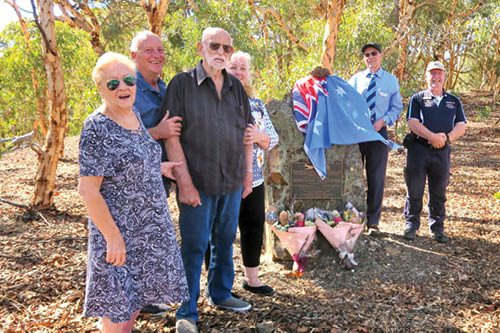
RAAFA WA member Charles Page was a former Dakota pilot, and was tasked to obtain access and organise the visit. On researching the Air Force News he found a photo of fellow member, SQNLDR Paul Falconer-West, who provided information on the new owner and location.
So on Friday 15 April 2022 Charles and Paul escorted Cheryl and Peter Anthony, James and Maureen Pinington, and Mark Pinington up to the site, high up in the Darling Range. At the memorial, both Charles and Paul gave an address and laid floral tributes on behalf of RAAFA, and the Air Cadets branch. Soon afterwards, some of the relatives found some small pieces of wreckage, which the manager allowed them to keep as mementoes. The group then went to the wooden platform lookout, with views of the Pearce runway, and it was easy to visualise the flight path of the Dakota. It was a tranquil rural scene, with kangaroos hopping around, and a view stretching to the coast. It seemed everyone was now at peace. James Kevin Pinington had realised his last wish. He died a few weeks later on 26 May 2022.
Sources:
Jock Clough, Wendy Vaugha, Daniel Dechtiar, Grahame Higgs, West Australian, NAA PP474/1,704/49/PI
Main pic Dakota A65-106 before crash. Bill Miles.



